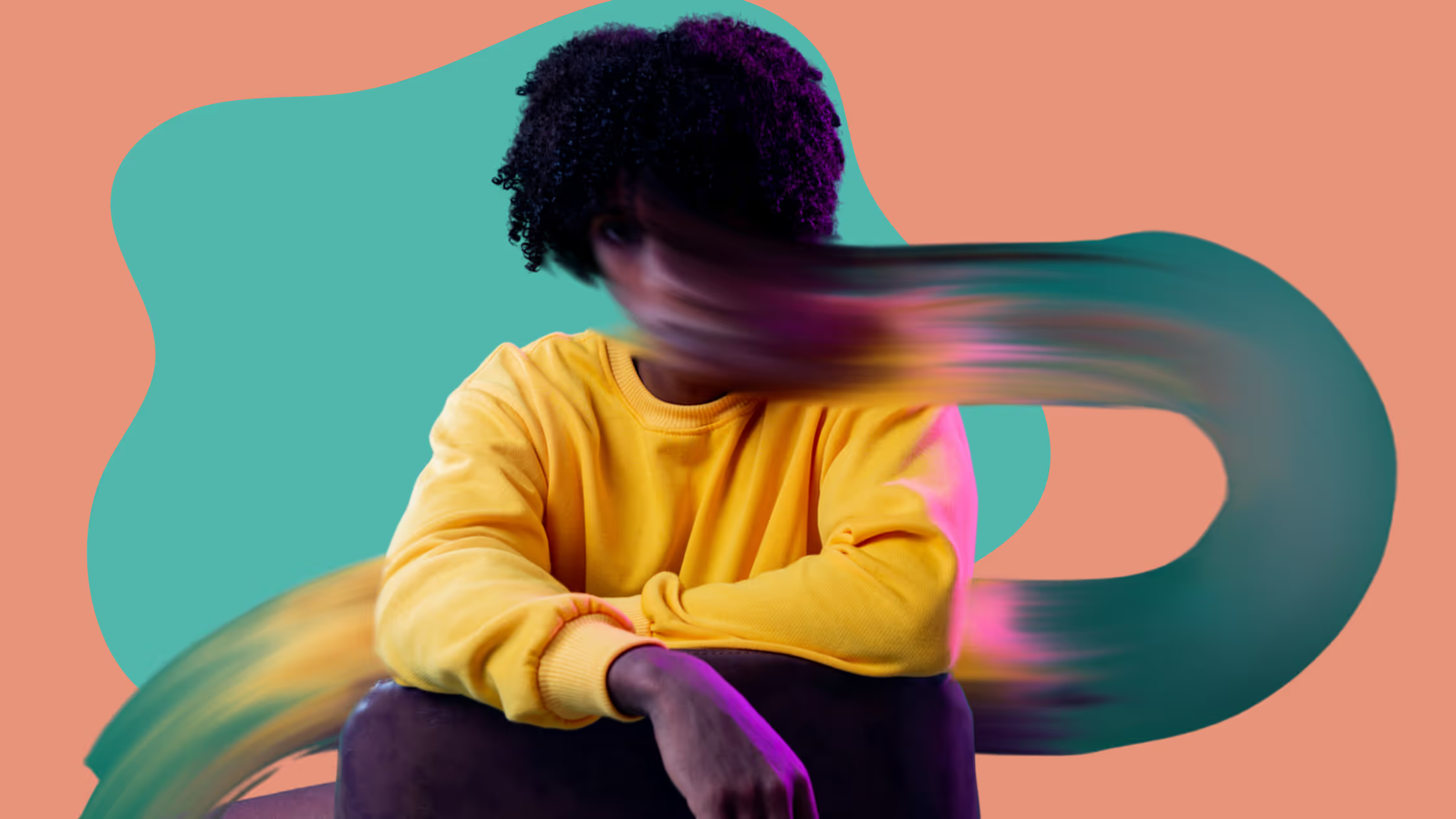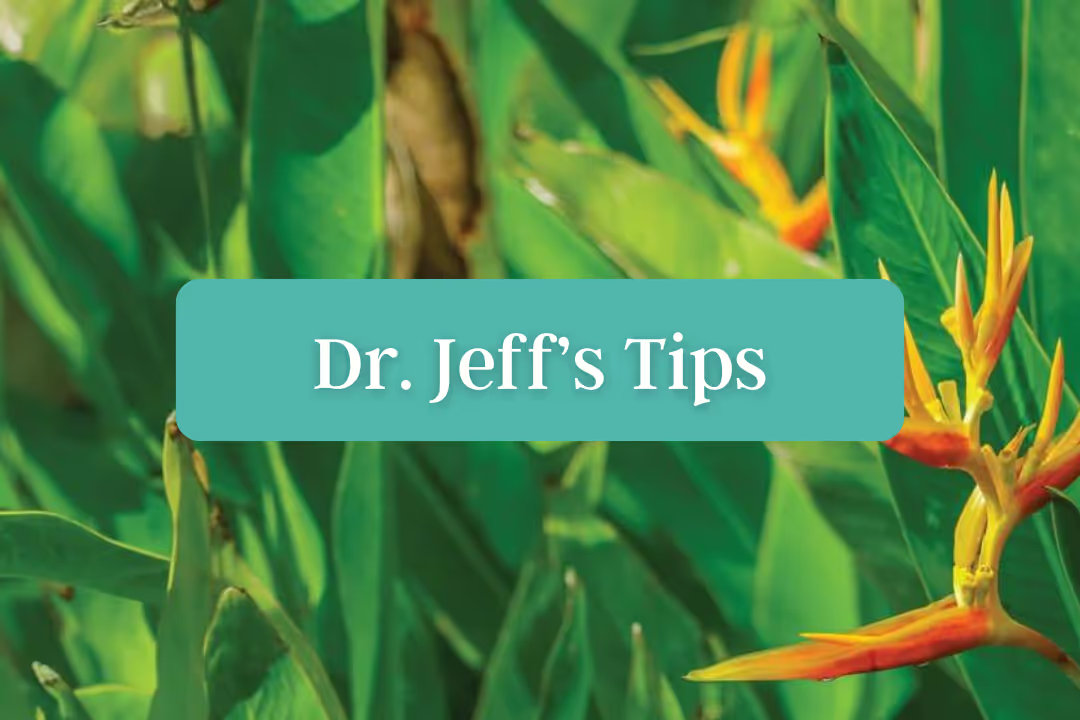Ayahuasca's Potential to Treat Depression and Anxiety


Exploring the potential of Ayahuasca therapy in treating symptoms of depression and anxiety can be a valuable tool for individuals dealing with these conditions, healthcare professionals looking for new therapies, and anyone interested in mental health advancements. Read on to examine scientific research, safety considerations, and the impact of its psychoactive components on mental health.
Introduction to Ayahuasca and Mental Health
What is Ayahuasca?
Ayahuasca (pronounced Iowaska) is a powerful psychoactive concoction with a rich history of traditional use by Indigenous cultures and folk healers in the Amazon and Orinoco basins for more than 3,000 years. In the Quechua language, it translates to "vine of the soul." The earliest indigenous people of the Amazonian basin administered the brew by shamans for spiritual communication, initiation rites, and healing rituals. This sacred beverage is typically consumed in structured spiritual ceremonies and healing rituals to facilitate deep introspection, spiritual insight, divination, and the treatment of various psychosomatic conditions. The preparation of this brew involves a meticulous combination of plants, including the Banisteriopsis caapi vine and the leaves of the Psychotria viridis shrub. Known for inducing profoundly altered states of consciousness, its use has recently gained attention for its potential therapeutic benefits and significant role in spiritual and personal exploration.
Overview of Its Use in Mental Health
The use of Ayahuasca plant medicine is gaining popularity as an alternative treatment for mental health issues due to its unique healing properties not commonly found in conventional medicine. As a result, more people are traveling to South and Central America to participate in ceremonies that are legally conducted in countries like Costa Rica and Peru. These ceremonies are sought after because they have the potential to promote deep introspection and exploration of alternative treatments for conditions such as depression and anxiety. According to a recent study using data from the Global Ayahuasca Project, 78% of individuals with depression reported significant improvement or complete resolution of their symptoms after participating in Ayahuasca plant ceremonies. In comparison, 70% of those with anxiety reported similar improvements. This growing trend highlights the potential of the Ayahuasca experience as a complementary approach to addressing mental health challenges that conventional medicine may not adequately treat.
Scientific Research on Ayahuasca for Depression
Critical Studies and Their Findings
The World Health Organization (WHO) reports that 280 million people worldwide are affected by depression. Sadly, in 2023, around 700,000 individuals lost their lives to suicide. What's even more concerning is that one-third of these patients do not see improvements with current depression treatments.
Research has shown that a single dose of Ayahuasca shows significant promise as a therapeutic intervention for individuals who are unresponsive to traditional therapies. A cross-sectional study of 11,912 participants suggests that even across cultures around the world, plant medicine is associated with antidepressant effects even after one dose.
Studies also highlight that Ayahuasca therapy acts quickly, which is not observed with other conventional antidepressant therapies. This rapid action could be beneficial for individuals with suicidal thoughts by quickly reducing emotional instability. In a longitudinal study conducted over a year after a single dose of Ayahuasca, depression symptoms decreased. This helped individuals who previously had treatment-resistant depression and raised the possibility that Ayahuasca may be an alternative treatment when previous treatments fail. The effects seen with just one dose of the plant medicine are promising compared to conventional therapies, which require multiple or constant doses and can have adverse effects. The combined effects of increased cortisol levels, brain-derived neurotrophic factor (BDNF), anti-inflammatory effects, and stimulation of the sigma one receptor, along with positive mystical experiences during an Ayahuasca experience and the after-effects, all contribute to its potential as an antidepressant for those with significant depression that has not responded well to current pharmaceuticals available. If used in the correct setting with the proper guidance, it can prove to be an alternative treatment for a variety of psychological disorders.
Biochemical Impact
The traditional method of preparing the brew involves placing the washed stem of B. caapi and the leaves of P. viridis in a large cauldron and pounding them with a wooden mallet. B. caapi contains harmala alkaloids and β-carbolines, while P. viridis contains N, N-dimethyltryptamine (DMT), a potent psychedelic.
The β-carbolines act as reversible inhibitors of A-type isoenzymes of monoamine oxidase (MAO) and have selective serotonin reuptake inhibitor effects. P. viridis is a source of DMT and a serotonin receptor agonist. The inhibitor effects on monoamine oxidase prevent DMT from being broken down, allowing it to be orally active.
The study of DMT, the primary psychoactive compound in the brew, has revealed profound neurological effects through numerous electroencephalography (EEG) studies. These studies suggest that the mystical experiences associated with the brew could be attributed to the impact of DMT on brain waves, a phenomenon not fully explained by the biochemical targets. One study observed a statistically significant decrease in alpha waves across all scalp locations, accompanied by increased delta waves. Moreover, an increase in gamma waves was noted, indicating a potential contribution to the mystical element of the experience.
Exploring Ayahuasca's Role in Anxiety Treatment
Recent Research
Anxiety is a widespread condition affecting many people globally and is often linked with other conditions, posing challenges for effective treatment. While there are therapies and medications available to alleviate anxiety, they are not always successful and can have significant side effects. Recent research has been exploring the potential use of psychedelics for treating anxiety.
Studies indicate that users of Ayahuasca tend to have lower levels of anxiety compared to non-users. Long-term participants in plant medicine ceremonies have reported reduced anxiety levels and improved overall health. A study known as the Global Ayahuasca Project (GAP) was carried out from 2017 to 2020, involving 11,912 participants. The research specifically focused on a subgroup of individuals who had reported being diagnosed with depression or anxiety at the time of participating in an Ayahuasca ceremony. Among the participants, 70% reported significant improvement or complete resolution of their symptoms. The study found that factors such as subjective mystical experiences, the number of sessions, and the number of personal psychological insights experienced were linked to more remarkable reported symptom improvement.
Effects on Anxiety
Studies in rodents have shown that certain compounds found in Ayahuasca, such as harmine and harmaline, may have anxiolytic effects. Harmaline works as an MAO-A inhibitor, which could explain its anxiolytic effects by increasing serotonin levels in the brain after inhibiting MAO-A. However, the exact mechanisms responsible for the anxiolytic and antidepressant properties of harmine and harmaline are not fully understood, and there may be other non-serotonergic mechanisms involved, such as modulation of glutamate receptors or interaction with the endocannabinoid system. The effects of harmine are intricately linked to the regulation of cell energy balance, mitochondrial functions, and oxidative stress, as well as the modulation of BDNF, a protein involved in neuroplasticity and depressive symptoms. Harmine and harmaline also bind to 5-HT2A receptors, and activating these serotonin receptors may increase BDNF levels. Furthermore, some studies suggest that the GABAA receptor could be involved in the anxiolytic effects of harmine, adding to the fascinating complexity of the mechanisms of action of Ayahuasca compounds.
The observed increase in cognitive flexibility following the use of Ayahuasca can be scientifically explained by a decrease in functional connectivity in the Default Mode Network (DMN), changes in the central executive network (CEN), and an increase in blood flow to the salience network (SN) after ingestion. These combined effects are believed to reduce activity in the frontal cortex, which is associated with executive control. A recent study using functional MRI scans before and after use in a group of healthy participants provided compelling evidence for these physiological changes. The study demonstrated increased connectivity within the anterior cingulate cortex and between the anterior cingulate cortex and the superior frontal gyrus in the Ayahuasca group compared to the placebo group. Additionally, increased connectivity between the salience and default mode networks was observed in the Ayahuasca group, further supporting the potential of Ayahuasca to affect brain networks related to cognitive function.
Anecdotal Evidence on Anxiety Reduction
In anecdotal and personal experiences, individuals often report experiencing ego dissolution after consuming the brew. Ego dissolution is observed due to a shift in thinking styles, including mindfulness. Mindfulness involves increased awareness, observation, and non-judgment of self. This shift leads to enhanced creative thinking, allowing individuals to consider different perspectives. A study involving 57 participants measured the sub-acute and long-term effects of ceremonies on ego dissolution and the associated positive changes. Changes in mood, satisfaction with life, and mindfulness were found to be linked to ego dissolution. Depression and anxiety showed a significant decrease 24 hours after the experience. This suggests that individuals experience ego dissolution through mindfulness during the acute phase, and the effects on depression and stress continue to persist in the long term.
Safety and Side Effects
Typical Physical and Psychological Reactions
Participating in an Ayahuasca ceremony can lead to side effects such as vomiting, diarrhea, paranoia, and panic. Although these are considered normal and temporary, they can be uncomfortable. It's important to note that plant medicine can interact dangerously with many medications, including antidepressants, psychiatric medications, drugs used to control Parkinson's disease, cough medicines, weight loss medications, and more. People with a history of psychiatric disorders, such as schizophrenia, should avoid it, as it could worsen their symptoms. Additionally, taking Ayahuasca can increase your heart rate and blood pressure, which may result in dangerous side effects if you have a heart condition. When participating in a plant medicine ceremony, you entrust your well-being to the shaman leading the ceremony, as they are responsible for the ingredients, dosing, and monitoring side effects. Some retreats may be offered by untrained individuals who lack expertise in the preparation, dosing, or side effects, putting participants in danger. Therefore, it is critical to choose a reputable facility with skilled shamans. It’s also essential to ensure that the center you choose will have access to a proper medical team if necessary.
Addressing Potential Risks and How to Mitigate Them
Experiences with Ayahuasca can be challenging as they may bring up deep-seated emotions. To navigate these challenges, it's essential to approach the experience with an open heart, humility, and a willingness to surrender to the process.
During a ceremony, vomiting and purging are common, and unresolved trauma can resurface. However, this is a natural process that allows the body to release difficult emotions such as anxiety, shame, and guilt. Even physical symptoms such as vomiting can be a healthy and cathartic release of trauma and emotions that have become trapped within the body. Confronting and releasing fears is a vital part of the healing journey. A guided ceremony and a high-quality retreat center will provide a supportive and safe environment to guide guests through this process and integrate the experience meaningfully.
Legal and Ethical Considerations
Current Legal Status
The legality of the consumption of the Ayahuasca brew, also known as yage, has been a topic of discussion among many individuals worldwide. The brew, made from the Banisteriopsis caapi vine and other plants containing the psychoactive compound DMT, is explicitly illegal in only a handful of countries. However, its legality is questionable in many different countries as DMT, a Schedule I drug, is unlawful to use or own in most parts of the world. This gray area of legality has caused much debate among people who believe that the plant has medicinal, spiritual, and therapeutic properties. It is worth noting that the human body naturally produces DMT, and it is also present in countless plants and animals worldwide. It is believed that DMT plays a crucial role in the dreaming process. The legality of Ayahuasca and DMT remains a contentious issue, with proponents advocating for its legalization for its potential benefits and opponents arguing against it due to its psychoactive properties.
Ethical Issues in Ayahuasca Tourism and Use
Ayahuasca is a powerful plant medicine that has been used for healing purposes by indigenous tribes for centuries. It is essential to recognize that Ayahuasca is not to be taken lightly or used as a recreational drug. Instead, it holds a significant cultural and spiritual significance for indigenous communities. The ceremonial use of Ayahuasca is deeply ingrained in the traditions of these tribes, as it is believed to facilitate a direct connection to the spiritual realm and the natural world. The medicinal, cultural, and spiritual properties of Ayahuasca are highly valued and should be respected accordingly.
Guidance for Potential Users
How to Choose a Safe Ayahuasca Retreat
Before experiencing Ayahuasca therapy, selecting a retreat center that emphasizes safety and well-being is crucial. When choosing a retreat, consider the ceremony type, amenities, and any warning signs to be mindful of. Prioritize safety and take necessary precautions when planning to attend an Ayahuasca retreat. Opt for a reputable retreat center with experienced facilitators, prepare yourself mentally and physically, research safety protocols, and adhere to recommended guidelines for a positive and transformative experience. When selecting a reputable Ayahuasca retreat, consider safety protocols, facilitators' experience, reviews from past attendees, location and accommodation amenities, and overall atmosphere.
Preparation and Expectations for a Session
Preparing for an Ayahuasca ceremony is crucial for safety, respecting the culture, and ensuring a meaningful experience. Adequate preparation will enable you to derive the most benefit from the ceremony. Before participating, it is customary to purify your body and mind. This may involve abstaining from certain substances such as alcohol and caffeine. Activities like meditation, yoga, or prayer can also assist in achieving a clear and focused mindset. It is common for individuals to adhere to a specific diet before the ceremony, which typically involves avoiding certain foods and substances that may interfere with the effects of Ayahuasca. Contemplating the objectives of the ceremony, reflecting on your aspirations, and being open to self-exploration can help you better manage the emotional aspects of the ceremony and gain profound insights into your thoughts, feelings, and experiences.
During a traditional ceremony, a shaman guides participants through rituals and practices to facilitate healing, personal growth, and self-discovery. The ceremony typically takes place at night in a darkened ceremonial space and involves the consumption of the sacred brew. The shaman leads the participants through chants, songs, and prayers while the brew's effects take hold. The effects of the ceremony can last for several hours, during which the participants may experience intense visions, emotions, and sensations. These experiences can be challenging but are also seen as opportunities for personal growth and healing. Overall, using Ayahuasca is a profoundly transformative experience that can help individuals better understand themselves, their connection to the natural world, and the spiritual realm. It is a medicine that deserves respect and reverence and should only be used under the guidance of a trained shaman or facilitator.
Conclusion
Ayahuasca has shown promise for potential therapeutic effects, sparking significant interest among researchers, healthcare professionals, and individuals seeking alternative solutions when conventional Western medical treatments may not suffice. Some benefits of Ayahuasca include improved or resolved symptoms of depression and anxiety, treatment for PTSD, recovery from alcohol and drug addiction, increased self-awareness, improved interpersonal relationships, gaining new perspectives on life, and resolving past trauma and triggers.
Take the next step
Ready for your life-changing journey?

Transform Depression with Ayahuasca
Watch this educational webinar to explore the therapeutic potential of Ayahuasca in treating depression with Dr. Jeff McNairy and Dr. Mariana Rojas.
Here's what you'll learn in this discussion:
- How people and their brains get stuck in depression
- How Ayahuasca resets the brain of people dealing with depression
- How the Rythmia Way Program helps people reset their lives

.avif)


